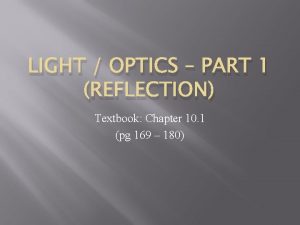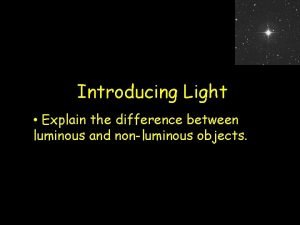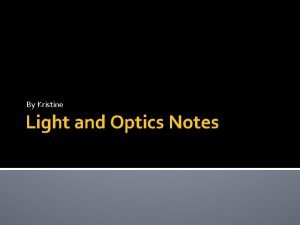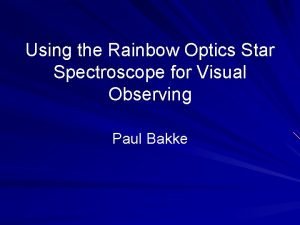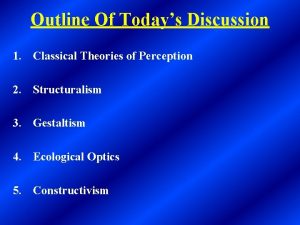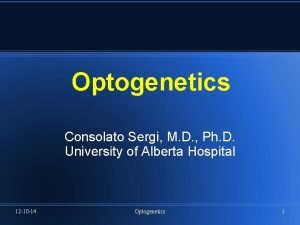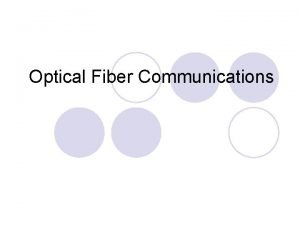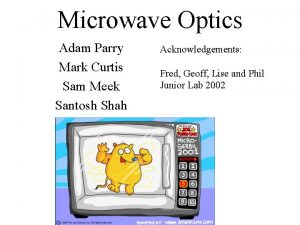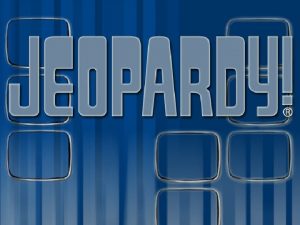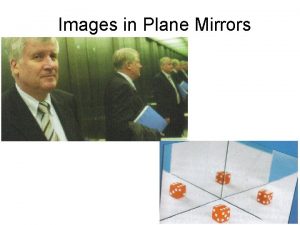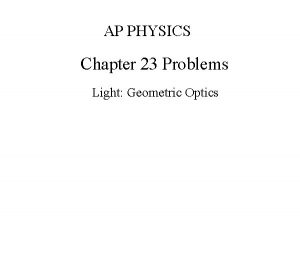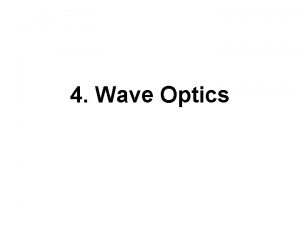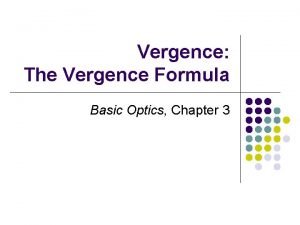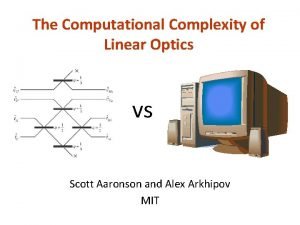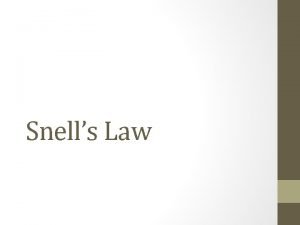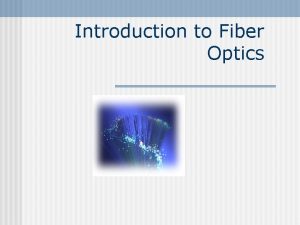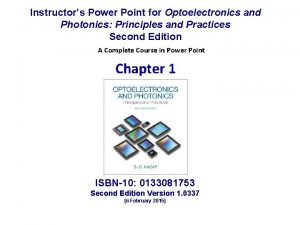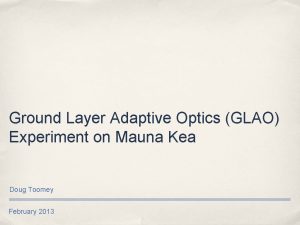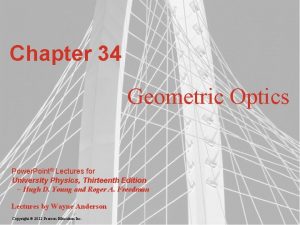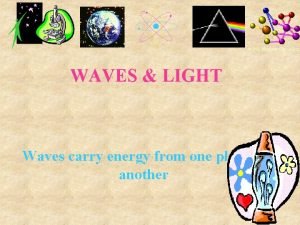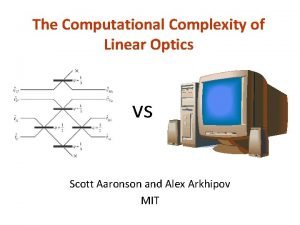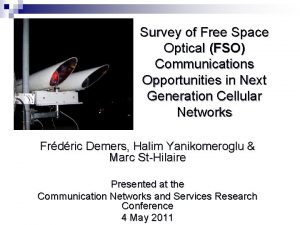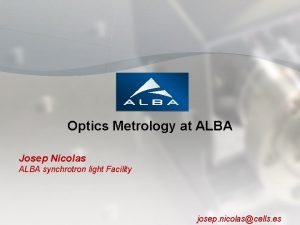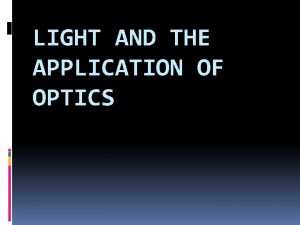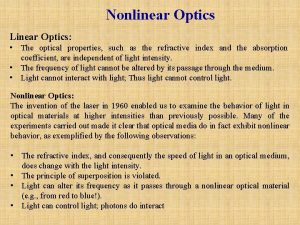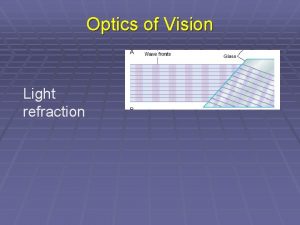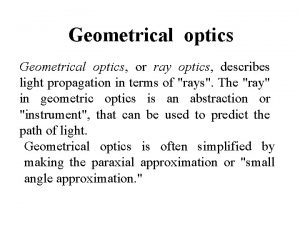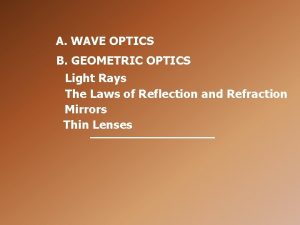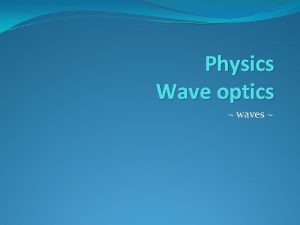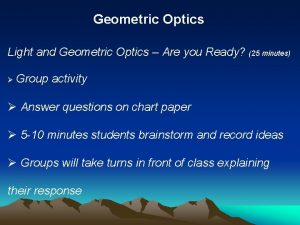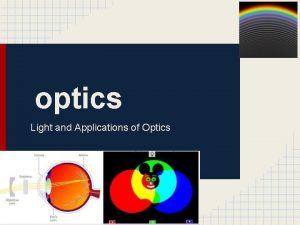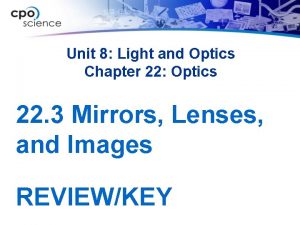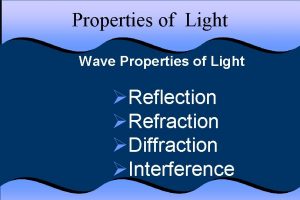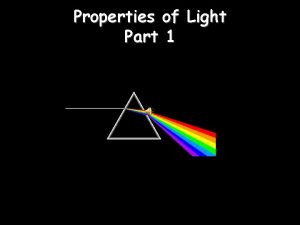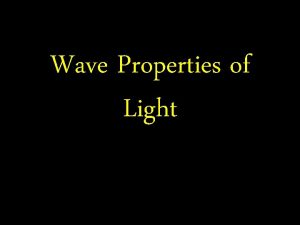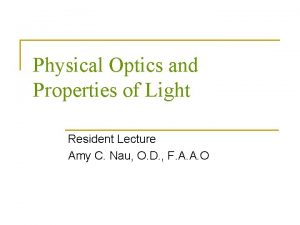Optics Light Overview of light Properties of light




































- Slides: 36

Optics Light - Overview of light - Properties of light - Luminous and non-luminous objects - History of light - The electromagnetic spectrum - Prisms - Colour

Teach. With. Fergy Preview File Please enjoy this preview of your Power Point. - Some slides appear blank because they have been removed. - Other slides may have. . . on them, this represents writing that has been removed. - Words that are bolded and underlined represent blanks in the student version - Please note that the Entire Unit Package can also be purchased at a steep discount from my Store.

Where does light come from? The SUN!! • The sun is a star located __________________________________, away from Earth. • It provides energy in the form of light through a process called nuclear fusion. • Nuclear fusion occurs when two atoms that naturally repelled each other ____________ • __________

• The sun provides the energy that enables life on Earth.

Slide Removed

• Light travels VERY FAST – 3. 0 X 108 m/s = 300, 000 kilometres per second. At this speed it can. . . . . ______

The Strangeness of Light • The speed of light (c) is constant • Nothing moves faster than the speed of light • Anything with mass cannot travel at the speed of light • …………….

Slide Removed

• Light travels ___________than sound. For example: 1) Thunder and lightning start at. . . 2) When a. . . .

• We see things. . . : Homework

Luminous and non-luminous objects A ______object is one that produces light. A ______ object is one that reflects light.

Fun Science Light Video

Slide Removed

Properties of Light summary 1) Light travels. . . . 2) Light travels ______ 3) We see things because. . . . 4). . . .

Slide Removed

Modern electromagnetic waves • Today we …………………. . _______

Modern View Continued As we _______

Slide Removed

The Surprising Universe • Today Scientists use different portions of the electromagnetic spectrum to collect and analyze data about _______ • This provides them with completely different views compared with using visible light only

The Surprising Universe

Essential Knowledge, Skills, and Processes • Analyze the …………………. _______

Slide Removed

The colours of the rainbow: • Red • Orange • Yellow • Green • Blue • Indigo • Violet

Prisms • What happens when you place two prisms next to each other? Simulation Removed

Slide Removed

Adding colours • White light can be split up to make separate colours. These colours can be added together again. • The primary colours of light are __________ : Adding blue and red makes magenta (purple) Adding red and green makes yellow Adding blue and green makes cyan (light blue) Adding all three makes white again

Seeing colour • The colour an object appears _______ For example, a red book __________ White light Only red light is reflected

. . . . Purple light A white hat would reflect __________ White light

Slide Removed

• In different colours of light this uniform would look different: Red light Shirt looks red, why? Shorts look black, why? Blue Shirt looks black, why? light Shorts look blue, why?

Using filters • Filters can be used to “______” out different colours of light: Red Filter Magenta Filter

Colour Blindness • The tricky thing about colour blindness is. . . • (40% of. . . .

How many animals are there?


• Blue Colour Blindness. . . • In both these cases. . .

Slide Removed
 Difference between ray optics and wave optics
Difference between ray optics and wave optics Reflection and refraction venn diagram
Reflection and refraction venn diagram Single ray
Single ray What is the difference between luminous and non-luminous?
What is the difference between luminous and non-luminous? Bill nye light optics
Bill nye light optics Light and optics notes
Light and optics notes Nitrogen group
Nitrogen group Chapter 17 overview elements and their properties
Chapter 17 overview elements and their properties Light light light chapter 23
Light light light chapter 23 Light light light chapter 22
Light light light chapter 22 Chapter 22
Chapter 22 Rainbow optics star spectroscope
Rainbow optics star spectroscope Ecological optics
Ecological optics Turba optics
Turba optics Types of optics
Types of optics Curtis parry
Curtis parry Grade 10 optics review
Grade 10 optics review Purdue physics 241
Purdue physics 241 Salt image characteristics
Salt image characteristics Hotwire fiber optics
Hotwire fiber optics Single slit envelope
Single slit envelope Http //vsg.quasihome.com
Http //vsg.quasihome.com Types of optics
Types of optics Geometric optics problems
Geometric optics problems Fourier optics
Fourier optics Vergence formula
Vergence formula The computational complexity of linear optics
The computational complexity of linear optics Snells law
Snells law Introduction to fiber optics
Introduction to fiber optics Cauchy formula optics
Cauchy formula optics Adaptive optics
Adaptive optics Geometrical
Geometrical Geometrical optics ppt
Geometrical optics ppt What medical procedure uses fiber optics bill nye
What medical procedure uses fiber optics bill nye The computational complexity of linear optics
The computational complexity of linear optics Fso
Fso Nicolas alba
Nicolas alba


